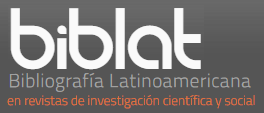Occurrence of enteroparasites in schoolchildren in the city of Bandeirantes, Paraná, Brazil
DOI:
https://doi.org/10.5433/1679-0367.2020v41n1p31Keywords:
Intestinal parasites, Epidemiological questionnaire, Educational actionsAbstract
The objective of this study was to evaluate the occurrence of enteroparasites in schoolchildren from the 6th to the 9th of a public school system in the city of Bandeirantes, Paraná, and to discuss educational actions in the prevention of intestinal parasites. Fecal samples were processed by spontaneous sedimentation, centrifugal-flotation in 33% zinc sulfate and modified Kato-Katz methods. The chisquare test (?2), Fisher's exact test and Odds Ratio (OR) test were used to analyze the association between the results and the data obtained from the epidemiological questionnaire, with a significance level of 5%. Of the 112 fecal samples analyzed, 9.8% (11/112) were positive. Monoparasitism was observed for 10 samples, for the following parasites: Giardia sp 36.3% (4/11); Entamoeba coli 27.3% (3/11); Iodamoeba butschlii 9.1% (1/11); Endolimax nana 9.1% (1/11) and Enterobius vermicularis 9.1% (1/11). Polyparasitism was observed for only one sample with Endolimax nana and Iodamoeba butschlii. There were no significant differences (p> 0.05) between the variables associated with the stool test results. Educational actions covered 90% (273/307) of schoolchildren. The parasites E. coli, I. butschlii and E. nana, despite being commensal to the human intestinal tract, are indicators of failure in personal hygiene, since its mechanism of transmission is via the fecal-oral route. However, despite the low frequency found, there is circulation by intestinal parasites in the study population, strengthening the importance of educational actions in the role of prevention, which help in personal hygiene and food adequatelyDownloads
References
2 Biscegli TS, Candido AB, Santos JM, Candido ELA, Binotto AL. Estado nutricional e prevalência de enteroparasitoses em crianças matriculadas em creche. Rev Paul Pediatr [Internet]. 2009 [citado 2014 ago 1];27(3):289-95. Disponível em: http://www.redalyc.org/pdf/4060/406038930009.pdf
3 Lopes FM, Gonçalves DD, Reis CR, Breganó RM, Anaruma Filho F, Murad VA, et al. Occurrence of enteroparasitoses in schoolcildren of the municipal district of Jataizinho, State of Paraná, Brazil. Acta Sci Health Sci [Internet]. 2006 [cited 2014 Mar 8];28(2):107-11. Available from: https://www.redalyc.org/pdf/3072/307226619001.pdf
4 Bragagnollo GR, Godoy PCGT, Santos TS, Ribeiro VS, Morero JAP, Ferreira BS. Intervenção educacional sobre enteroparasitoses: um estudo quase experimental. Rev Culd [Internet]. 2018 [citado 2018 mar 8];9(1):2030-44. Disponível em: http://www.scielo.org.co/pdf/cuid/v9n1/2216-0973-cuid-9-1-2030.pdf
5 Alves FV, Souza AC, Guimarães HR, Amorim ACS, Cruz MA, Santos BS, et al. Aspectos epidemiológicos das enteroparasitoses em crianças domiciliadas em um assentamento rural no nordeste brasileiro. Rev Eletr. Acervo Saúde [Internet]. 2014 [citado 2016 jan 25];6(3):666-76.
6 Instituto Brasileiro de Geografia e Estatística. Censo demográfico [Internet]. 2010 [citado 2018 abr 2]. Disponível em: https://cidades.ibge.gov.br/brasil/pr/bandeirantes/panorama
7 Carli GA. Parasitologia clínica: seleção de métodos e técnicas de laboratório diagnóstico das parasitoses humanas. São Paulo: Atheneu; 2001.
8 Department of Health and Human Services (USA). Epi Info [Internet]. 2018 [citado 2018 abr 6]. Disponível em: https://www.cdc.gov/epiinfo/index.html
9 Gomes SCS, Rodrigues SR, Silva AB, Arruda, AKS, Silva NM, Macedo RS, et al. Educação em saúde como instrumento de prevenção das parasitoses intestinais no município de Grajaú - MA. Rev Pesqui Foco [Internet]. 2016 [citado 2018 fev 5];21(1):34-45. Disponível em: http://ppg.revistas.uema.br/index.php/PESQUISA_EM_FOCO/article/view/1123
10 Lopes-Mori FMR, Mitsuka-Breganó R, Oliveira FJA, Dutra MCMN, Sarzi MBL, Aidar MR, et al. Fatores associados a enteroparasitoses em escolares da rede municipal de ensino de Cambé. Semina: Ciênc Biol Saúde. 2016;37(1):15-24. doi: 10.5433/1679-0367.2016v37n1p15
11 Ferreira H, Lala ERP, Monteiro MC, Raimondo MC. Estudo epidemiológico localizado da frequência e fatores de risco para enteroparasitoses e sua correlação com o estado nutricional de crianças em idade pré-escolar. Publi UEPG Ci Biol Saúde [Internet]. 2006 [citado 2011 jun 25];12(4):33-40. Disponível em: https://www.revistas2.uepg.br/index.php/biologica/article/view/442/443
12 Ludwig KM, Frei F, Alvares Filho F, Ribeiro-Paes JT. Correlação entre condições de saneamento básico e parasitoses intestinais na população de Assis, Estado de São Paulo. Rev Soc Bras Med Trop [Internet]. 1999 [citado 2015 jan 4];32(5):547-55. Disponível em: https://repositorio.unesp.br/bitstream/handle/11449/6471/S003786821999000500013.pdf?sequence=1&isAllowed=y
13 Andrade AO, Sá ARN, Bezagio RC. Prevalência de parasitoses intestinais em crianças de um centro municipal de educação infantil de Campo Mourão, PR/Brasil. Uningá Rev [Internet]. 2017 [citado 2018 jan 8];29(3):36-41. Disponível em: http://revista.uninga.br/index.php/uningareviews/article/view/1971/1567
14 Barros DM, Santos CYB, Silva FA, Moura DF, Rocha TA, Ferreira SÃO, et al. Alimentos contaminados por enteroparasitas: uma questão de saúde pública. Braz J Health Rev [Internet]. 2019 [citado 2019 jan 6];2(1):277-89. Disponível em: http://www.brjd.com.br/index.php/BJHR/article/view/931/810
15 Benitez AN, Mareze M, Miura AC, Brunieri DTSC, Ferreira FP, Mitsuka-Breganó R, et al. Abordagem da saúde única na ocorrência de enteroparasitas em humanos de área urbana no norte do Paraná. Arq Ciênc Vet Zool UNIPAR [Internet]. 2016 [citado 2018 nov 7];19(4):203-8. Disponível em: https://www.revistas.unipar.br/index.php/veterinaria/article/view/6097/3415
16 Rey L. Parasitologia: parasitos e doenças parasitárias do homem nos trópicos ocidentais. 4a. ed. Rio de Janeiro: Guanabara Koogan; 2016. p. 598-603.
17 Melo ACFL, Ceia Junior EA, Azevedo IM, Souza PDA, Miranda CRL, Borges EP, et al. Aspectos epidemiológicos das esteroparasitoses em crianças de uma unidade pública de ensino de Paraíba, Piauí. UNOPAR Cient Ciênc Biol Saúde [Internet]. 2014 [citado 2017 dez 10];16(3):191-6. Disponível em: http://www.pgsskroton.com.br/seer/index.php/JHealthSci/article/view/433/403
18 Puebla LEJ, Núñez FA, Silva IM, Rivero LR, Gonzáles MM, Sutil YM, et al. Molecular characterization and risk factors of Giardia duodenalis among school children from La Habana, Cuba. J Parasitol Res. 2015;1-8. doi: 10.1155/2015/378643
19 Lallo MA, Spadacci-Morena DD, Coutinho SDS. Comportamento humano na criação de cães e a prevalência de parasitos intestinais com potencial zoonótico. Rev Acad Ciênc Anim [Internet]. 2016 [citado 2018 jan 9];14:119-28. Disponível em: https://www.researchgate.net/publication/305994030_Comportamento_humano_na_criacao_de_caes_e_a_prevalencia_de_parasitos_intestinais_com_potencial_zoonotico_Human_behavior_in_dog_breeding_and_the_prevalence_of_intestinal_parasites_with_zoonotic_potenti
20 Soares CVD, Albino SL, Silva RC, Duarte ABS, Queiroga CD, Medeiros JS. Prevalência de Enteroparasitoses em crianças de uma creche pública no município de Campina Grande. J Biol Pharm Agric Manag [Internet]. 2016 [citado 2018 maio 25];12(4):28-38. Disponível em: http://revista.uepb.edu.br/index.php/biofarm/article/view/3262/2391
Downloads
Published
How to Cite
Issue
Section
License
Copyright (c) 2020 Semina: Ciências Biológicas e da Saúde

This work is licensed under a Creative Commons Attribution-NonCommercial 4.0 International License.
adopts the CC-BY-NC license for its publications, the copyright being held by the author, in cases of republication we recommend that authors indicate first publication in this journal.
This license allows you to copy and redistribute the material in any medium or format, remix, transform and develop the material, as long as it is not for commercial purposes. And due credit must be given to the creator.
The opinions expressed by the authors of the articles are their sole responsibility.
The magazine reserves the right to make normative, orthographic and grammatical changes to the originals in order to maintain the cultured standard of the language and the credibility of the vehicle. However, it will respect the writing style of the authors. Changes, corrections or suggestions of a conceptual nature will be sent to the authors when necessary.
This Journal is licensed with a license Creative Commons Assignment-NonCommercial 4.0 International.

















